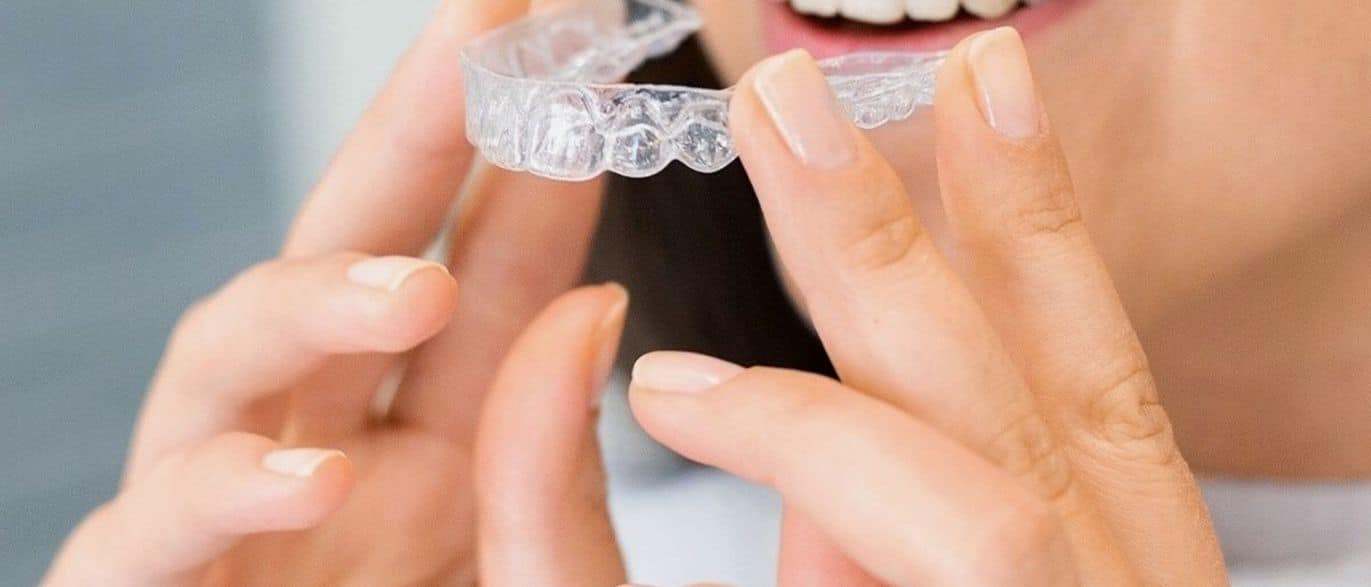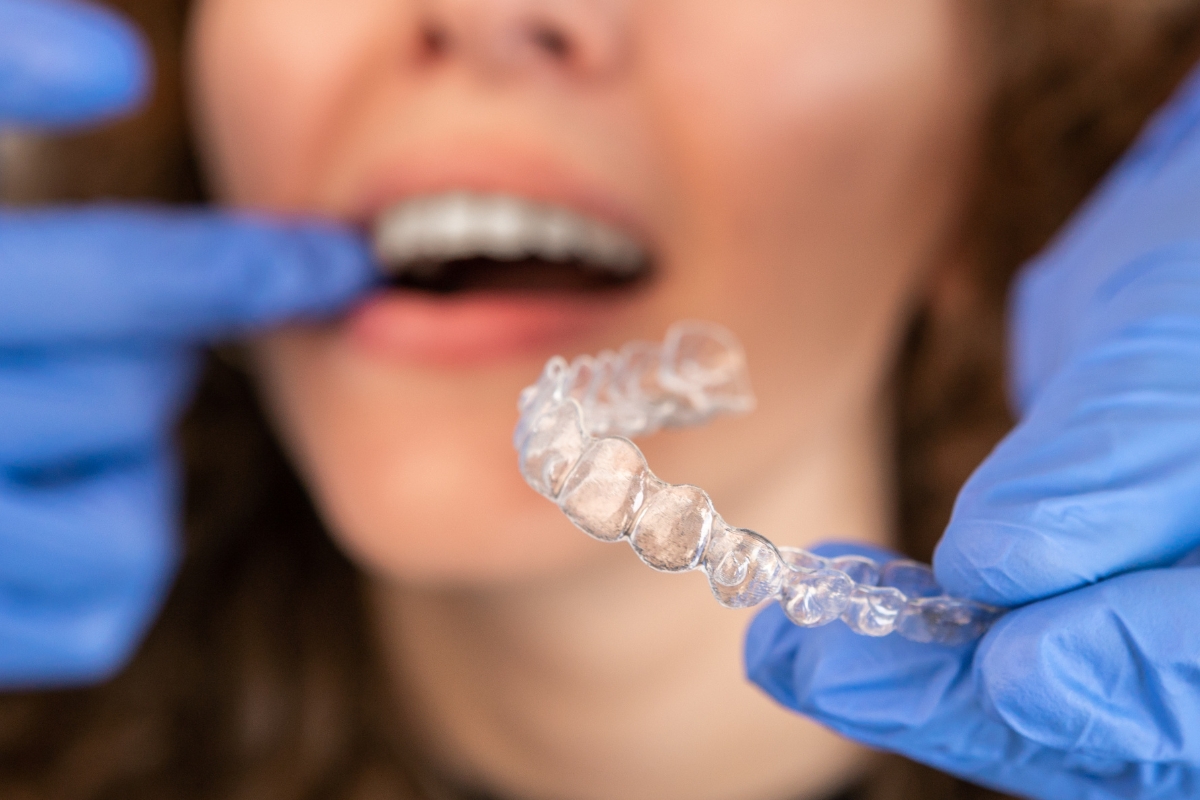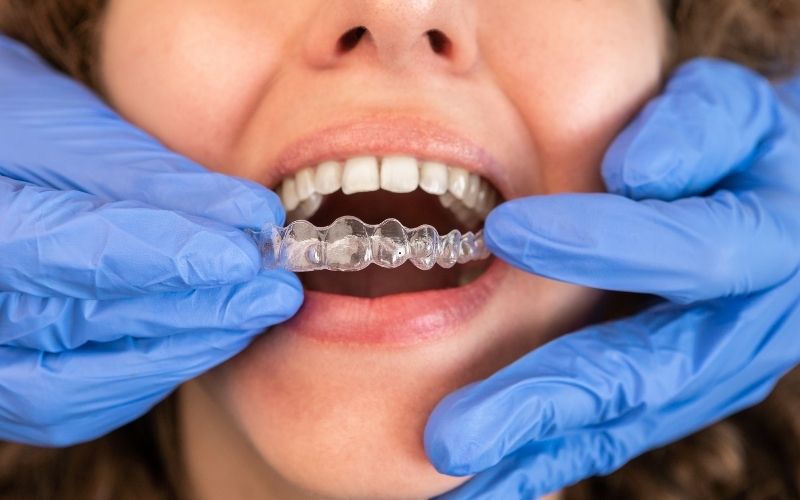Pearl Dental Blog

Common Invisalign Myths Debunked: Separating Fact from Fiction
Invisalign has gained immense popularity as an effective teeth-straightening solution. Many people prefer it due to its clear aligners and discreet appearance. However, misconceptions about Invisalign persist, leading to confusion for potential users. Understanding these myths versus the actual facts is crucial for making an informed decision.
This blog will debunk common myths about these aligners and provide you with the accurate information needed to determine if this treatment is right for you. By clarifying these misconceptions, you will gain insight into the capabilities and benefits of Invisalign.
What is Invisalign?
Invisalign is an innovative orthodontic treatment that uses clear aligners to straighten teeth. Unlike traditional braces, which use metal wires and brackets, Invisalign employs a series of custom-made aligners created from medical-grade plastic. These aligners gently shift your teeth into the desired position over time.
One of the significant benefits of these aligners is its aesthetic appeal. Many patients appreciate that the aligners are virtually invisible, allowing them to smile confidently during treatment.
Additionally, Invisalign is more comfortable than traditional braces. The aligners are smooth and less likely to irritate the gums and cheeks. Patients can also remove them when eating or brushing, promoting better oral hygiene.
Overall, Invisalign offers a convenient and discreet option for those looking to enhance their smiles.
Myths about Invisalign
Myth 1: Invisalign is Only for Minor Corrections
Invisalign can address a wide range of dental issues, from minor adjustments to complex cases. Many people mistakenly believe that only mild cases of misalignment qualify for treatment with these aligners. This method can treat various conditions, including overbites, underbites, crossbites, and gaps between teeth.
According to orthodontists, Invisalign can treat cases that were previously considered unsuitable for clear aligners. For example, a study published in the American Journal of Orthodontics and Dentofacial Orthopedics found that Invisalign achieved similar results to traditional braces in patients with moderate to severe misalignment. Testimonials from satisfied patients also highlight successful outcomes for complex orthodontic challenges.
Myth 2: Invisalign Aligners Are Uncomfortable
Many people think that these aligners are uncomfortable. However, they are specifically designed for comfort. Unlike traditional braces, which can irritate with metal brackets and wires, Invisalign aligners are made from smooth plastic that fits snugly over the teeth. This design minimizes discomfort.
Patients often report less discomfort with Invisalign than with traditional braces. A survey conducted by the American Association of Orthodontists found that 70% of Invisalign users rated their comfort level as high. Many patients appreciate the lack of emergency visits due to broken wires or brackets, which are common with traditional braces.
Myth 3: You Can’t Eat or Drink While Wearing Aligners
Some believe that they cannot eat or drink while wearing these aligners. Patients must remove their aligners when eating or drinking, except for water. This flexibility allows for a normal eating experience without restrictions.
Removing aligners during meals helps maintain oral hygiene. Patients can brush and floss their teeth without any obstruction. Many users enjoy the ability to eat a variety of foods without worrying about damaging their aligners or braces. Dentists often emphasize this point as a significant advantage over traditional braces.
Myth 4: Invisalign Takes Longer Than Traditional Braces
A common misconception is that these aligners take longer than traditional braces. However, treatment timelines can vary based on individual cases. Generally, Invisalign treatment can be as fast as, or even faster than, traditional braces.
Many factors influence treatment duration, including the complexity of the case and patient compliance. According to a study by the American Journal of Orthodontics, the average treatment time for Invisalign is about 12 to 18 months, while traditional braces typically take 18 to 24 months. Patients can achieve results promptly with the right treatment plan and adherence to wearing aligners for the recommended 22 hours daily.
Myth 5: Invisalign Is Only for Adults
Some people think these aligners are suitable only for adults. In reality, Invisalign caters to both teens and adults. Specific options, like Invisalign Teen, are designed for younger patients.
Invisalign Teen incorporates features that accommodate growing mouths, such as extra aligners for lost ones and eruption tabs for developing teeth. Many orthodontists report high success rates with teenage patients using these aligners. Case studies demonstrate that teens experience similar effectiveness as adults when using clear aligners.
Myth 6: You Don’t Need to Wear Aligners for 22 Hours a Day
Some believe they can wear aligners for less than the recommended 22 hours daily. However, compliance is crucial for effective treatment. Wearing aligners for the advised duration significantly impacts the speed and success of the process.
Patients who consistently wear their aligners as directed often see quicker results. Orthodontists recommend setting reminders or keeping aligners in case they are not in use to promote adherence. Studies show that patients who follow the instructions closely achieve their desired results within the planned timeline.
How Invisalign Works?: A Step-by-Step Guide
The Invisalign process begins with an initial consultation with an orthodontist. During this appointment, the orthodontist assesses your dental health and discusses your treatment goals. They may take X-rays, photographs, and impressions of your teeth. This information helps create a personalized treatment plan.
Once the plan is established, the orthodontist uses advanced 3D imaging technology to design your aligners. These images allow the orthodontist to map out the precise movements of your teeth throughout the treatment. Afterward, a series of custom aligners is created based on the treatment plan.
You will wear each set of aligners for about one to two weeks, gradually shifting your teeth into place. Regular check-ups every 6 to 8 weeks ensure your treatment progresses as planned. Adjustments can be made if necessary.
Once your teeth reach the desired position, your orthodontist will provide you with a retainer to maintain your new smile. This retainer is crucial for preventing teeth from returning to their original positions. By following these steps, these aligners provide a convenient and effective way to achieve a straight and beautiful smile.
Invisalign offers a modern solution for teeth straightening, but many myths can cloud understanding. We have debunked common misconceptions about these aligners, emphasizing its suitability for various cases, comfort, and the importance of compliance.
If you are considering Invisalign, consult with our orthodontists for personalized advice tailored to your unique dental needs. We can help you determine if Invisalign is the right option for your journey to a healthier smile. Embrace the opportunity to achieve the smile you have always wanted!





